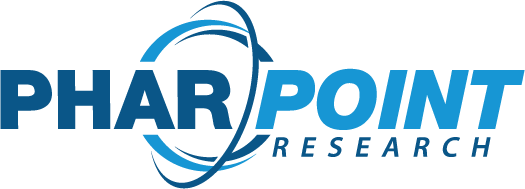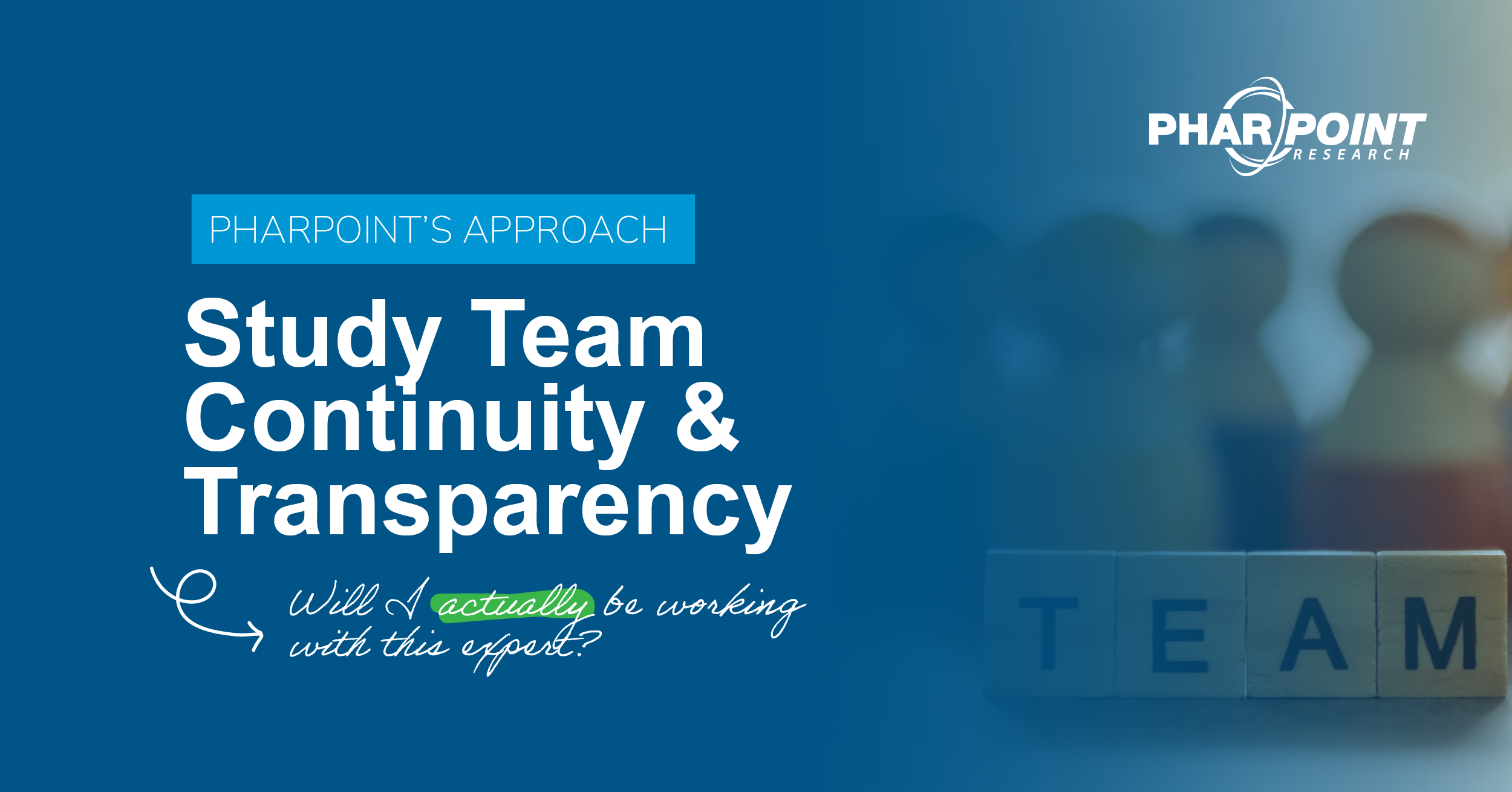Case study
This case study highlights how the PharPoint team collaborated with a sponsor to anticipate and address key challenges in a Phase 1 first-in-human (FIH) oncology study, ultimately completing last patient last visit and database lock ahead of schedule.
JUMP TO:

Identified risks
Early Identification of Risks in a Phase 1 FIH Oncology Trial
Upon study award, PharPoint worked closely with our client to identify key areas that could impact the success of this trial.
Three key areas of focus emerged: the potential for high screen failure rates, concern over site burden; and a high risk of protocol deviations due to out of window visits.
High screen failure rates:
The potential for a high screen failure rate was immediately identified as a concern for this Phase 1 FIH oncology trial, especially given the complexity of the inclusion and exclusion criteria.
High screen failure rates are a common challenge across oncology trials, resulting in considerable time and money spent collecting data from participants who are ultimately never enrolled. Outside of the logistical and financial impacts, a high screen failure rate can also be emotionally challenging for patients who are often eager to participate in new research due to limited treatment options, only to be later disqualified.
There does not appear to be a widely-agreed upon average screen failure rate for cancer trials conducted in the United States (potentially due, in part, to a lack of standardized definition for “screened”). 1, 2, 3 In one publication from The Josephine Ford Cancer Center in Michigan, the “assumed screen failure rate” nationally was stated to be 80%, adding in that their own overall rate at the time of publication was 78% for Phase 1 cancer trials.3
Additionally, details such as trial timing might further impact screen failure rate within oncology trials, with studies offered at the time of primary treatment reporting higher screen failure than trials offered at the time of disease recurrence.4
Concern over site burden:
The success of a study depends heavily on the success of individual site performance. Site staff, including principal investigators and clinical research coordinators (CRCs), are often stretched thin, and both PharPoint and our client agreed that there was a shared responsibility to reduce that burden whenever possible.
Broader research supports this concern: In 2015, an ASCO and AACI stakeholder survey was sent out to ask about administrative and regulatory burdens associated with conducting and managing cancer clinical trials. Over half of respondents (n=1,200) reported that they lacked adequate staffing to manage regulatory demands.5
More recent studies go on to highlight burnout and turnover among CRCs as ongoing challenges6, both of which may affect trial conduct as the CRC plays a demanding role critical to the success of a trial with a wide range of responsibilities.7
Risk of protocol deviations surrounding visit windows:
Finally, it was quickly determined that protocol deviations due to out of window visits would be a challenge in this study given the complexity and timing sensitivity of the protocol.
Research shows that oncology clinical trials, in particular, have the highest relative mean number of protocol deviations – affecting more than 40% of patients enrolled in each trial.8
OUR APPROACH
Turning Insight into Execution
The team created and implemented a mitigation strategy for the risks above with tactics deployed at both the study and site level.
At the study level:
It was determined that a protocol amendment widening visit windows was not advisable due to FIH status and safety implications. Instead, to support compliance, PharPoint and the sponsor provided additional study aids for site staff to help keep visits within the study-required timeframes.
To ease site burden, PharPoint’s clinical lead worked with the sponsor to design, implement and execute a revised enrollment adjudication process. This process was streamlined to minimize resources spent while effectively providing support to sites and study team members while navigating complex enrollment criteria.
To further ensure a reduced site burden, PharPoint’s data management (DM) team’s standard approach to query generation was used. Highlights from this best practice approach includes:
- All queries are written clearly to facilitate direct responses, limiting the need for re-queries.
- DM reviews data and queries on ongoing basis, ensuring queries are sent while still top of mind for site coordinators.
- Anomaly trends are identified and reported to CRAs, who then work with sites to refine processes and reduce entry errors and data anomalies, leading to fewer queries.
At the site level:
Our team thoughtfully planned for how we could assist sites in quickly ruling out ineligible patients and reduce screen failure rates. We embedded our project manager to help implement the revised enrollment adjudication process and act as a resource for our site partners, asking: what can the PharPoint team do to help sites capitalize on the assets they have to meet enrollment goals?
Ultimately, this entailed collaboration with all four sites on the study to provide tailored support depending on whether or not they were leveraging electronic medical records (EMR).
| Site leveraging EMR? | Support Provided |
|---|---|
| Yes | PharPoint’s team worked with site staff to support the creation of an SQL that automatically brings eligible patients forward for the coordinator |
| No | PharPoint’s team created a detailed pre-screening checklist and medical chart review aids to enable quick identification and rule out ineligible patients |
STUDY OUTCOME
Delivering on Trial Milestones
Ultimately, with the above strategy in place, each cohort filled within the expected timeline. Last patient, last visit (LPLV), and by extension, database lock (DBL), was completed ahead of schedule.
About PharPoint
PharPoint is a consultative contract research organization (CRO) that has experience supporting biopharma companies as they navigate the complexities of early phase oncology trials. Our team is committed to helping studies stay on track and meet critical milestones.
If your organization is preparing for a Phase 1 FIH oncology trial, connect with us to learn how PharPoint can help de-risk your trial and drive operational success.
1. I Korakis, K Ouali, B Hanvic, et al. Addressing screening failures in early-phase clinical trials in oncology: impact on patient outcomes and strategies for improvement. ESMO Open. 2025;10(8):105331-105331. doi:https://doi.org/10.1016/j.esmoop.2025.1053312. Elm JJ, Palesch Y, Easton JD, et al. Screen failure data in clinical trials: Are screening logs worth it? Clinical Trials: Journal of the Society for Clinical Trials. 2014;11(4):467-472. doi:https://doi.org/10.1177/17407745145387063. Wang D, Pearce T, Cobani V, et al. Lessons from the other side of clinical trial accrual: Screen failures at the Josephine Ford Cancer Center/Henry Ford Health System in 2010. Journal of Clinical Oncology. 2011;29(15_suppl):e16624-e16624. doi:https://doi.org/10.1200/jco.2011.29.15_suppl.e16624
4. Manders DB, Paulsen A, Richardson DL, Kehoe SM, Miller DS, Lea JS. Factors associated with clinical trial screening failures in gynecologic oncology. Gynecologic Oncology. 2014;134(3):450-454. doi:https://doi.org/10.1016/j.ygyno.2014.06.023
5. Vose JM, Levit LA, Hurley P, et al. Addressing Administrative and Regulatory Burden in Cancer Clinical Trials: Summary of a Stakeholder Survey and Workshop Hosted by the American Society of Clinical Oncology and the Association of American Cancer Institutes. Journal of Clinical Oncology. 2016;34(31):3796-3802. doi:https://doi.org/10.1200/jco.2016.69.6781
6. Mascaro JS, Palmer PK, Ash MJ, et al. Incivility Is Associated with Burnout and Reduced Compassion Satisfaction: A Mixed-Method Study to Identify Causes of Burnout among Oncology Clinical Research Coordinators. International Journal of Environmental Research and Public Health. 2021;18(22):11855. doi:https://doi.org/10.3390/ijerph182211855
7. Davis AM, Hull SC, Grady C, Wilfond BS, Henderson GE. The Invisible Hand in Clinical Research: The Study Coordinator’s Critical Role in Human Subjects Protection. Journal of Law, Medicine & Ethics. 2002;30(3):411-419. doi:https://doi.org/10.1111/j.1748-720x.2002.tb00410.x
8. Getz KA, Smith ZA, Jain A, Krauss R. Benchmarking Protocol Deviations and Their Variation by Major Disease Categories. Therapeutic Innovation & Regulatory Science. 2022;56(July 2022):632-636. doi:https://doi.org/10.1007/s43441-022-00401-4
RELATED RESOURCES






